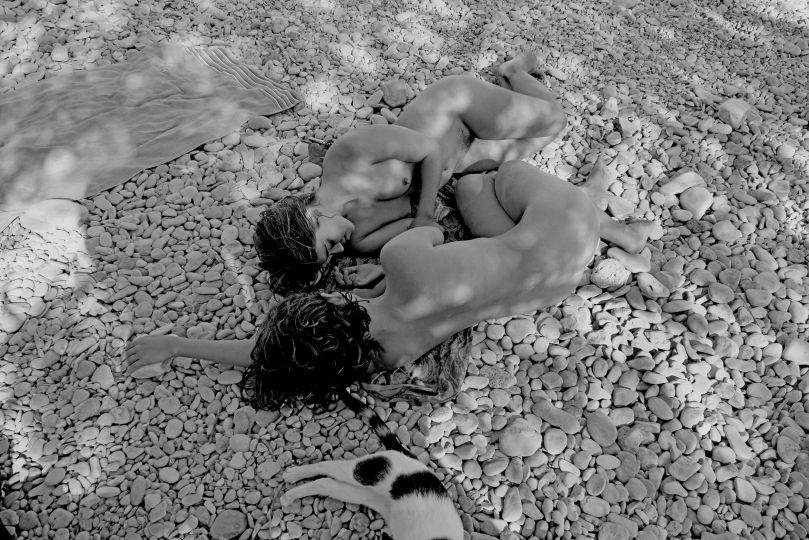From the Italian Renaissance to the early nineteenth century the formula of the Latin poet Orazio Ut Pictura poesis pointed to the doctrine of the comparison between visual arts and literature: according to the ancient auctoritas, if painting could make feelings and abstract concepts into the reality of matter, poetry could arouse in the listener mental faithful images to the object of its description in the same way of painting. Paraphrasing Orazio, the title of this exhibition highlights the complexity of Giancarlo Bononi’s approach to the photographic medium, ideally recalling some of his favorite themes.
His shots of the series Caravaggio and Trinacria are in fact conceived as figure paintings in which the subtly translucent printing technique and the depth of backgrounds on which the characters stand remind the glazes of oil paint. Each presence inhabits the right place and position according to the ancient canons of composition, the flesh absorbs the light that sculpts the volumes of bodies and it releases it slowly becoming an additional source of light. The draperies that emphasize the shapes have iridescent colors that are allusive to the precious fabrics and the objects that inhabit the scene are portrayed as luxurious pieces of still life.
The challenge is to orchestrate in a snapshot pose a group of characters whose bodies and their parts occupy space in order to create its lines of force, acquitting at the same time to their narrative task. The ideational structure and composition of the image contains a story in which movements, gestures and attitudes of the depicted subjects are concatenated into space in a simultaneity that contains what has happened and what is going to happen. Time becomes dense and the action takes place in a latent dimension pursuing a difficult balance between the recognition of the iconographic sources embodied in an immanent contemporary and the sublimation of humanity’s saucy beauty suspended between the models of the history of art and the icons of our time. The photograph shapes the real turning it into a mute poetry in which analogies, comparisons, metaphors and all the rhetorical devices that aim to strengthen the narrative expression are translated in theirs visual equivalent.
In the series dedicated to Caravaggio, for example, an androgynous David cuts with scissors Golia’s life that is represented by a turgid bunch of grapes, while Narciso is seduced by the desire of himself licking his own reflection in a pool of melted chocolate. As it happened in the threshold of the seventeenth century the light hits the main subject sculpting in the fluidity of time a precise instant that intensifies the overall effect in a dramatic sense. So in The Death of the Virgin a postmodern group of onlookers surrounds the protagonist expressing the subtle variations of anxiety – from compassion to fascination – as an emanation of her shining wounds or in the Calling of St. Matthew, a light beam is the revelation that dazzles the debt collector and unmasks his bad advisers crouched in the shadow.
The love for art and culture of the past has led Bononi in his quest for absolute beauty, rediscovering its roots in classical mythology, a vital archetype that according the author continues to shape our imagination. This is how the cycle Trinacria was born, a series of shots in which the human body emerges from the darkness in a dazzling Apollonian vision which enhances a timeless harmony, while also the contemporary residues that are inscribed in bodies such as tattoos, faces and hairstyles, renew the ineffability of the myth in a photographic here and now . So Hercules is cherished by the light that focuses on each detail of his muscular physique offering himself in the oblivion of sleeping to the triumph of the viewer’s gaze, while Trinacria folds her limbs to form a hypnotic triskelion without betraying any effort.
















